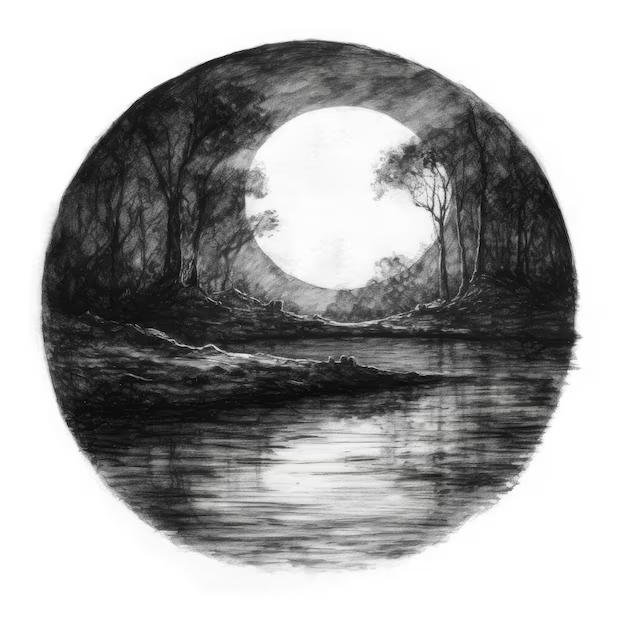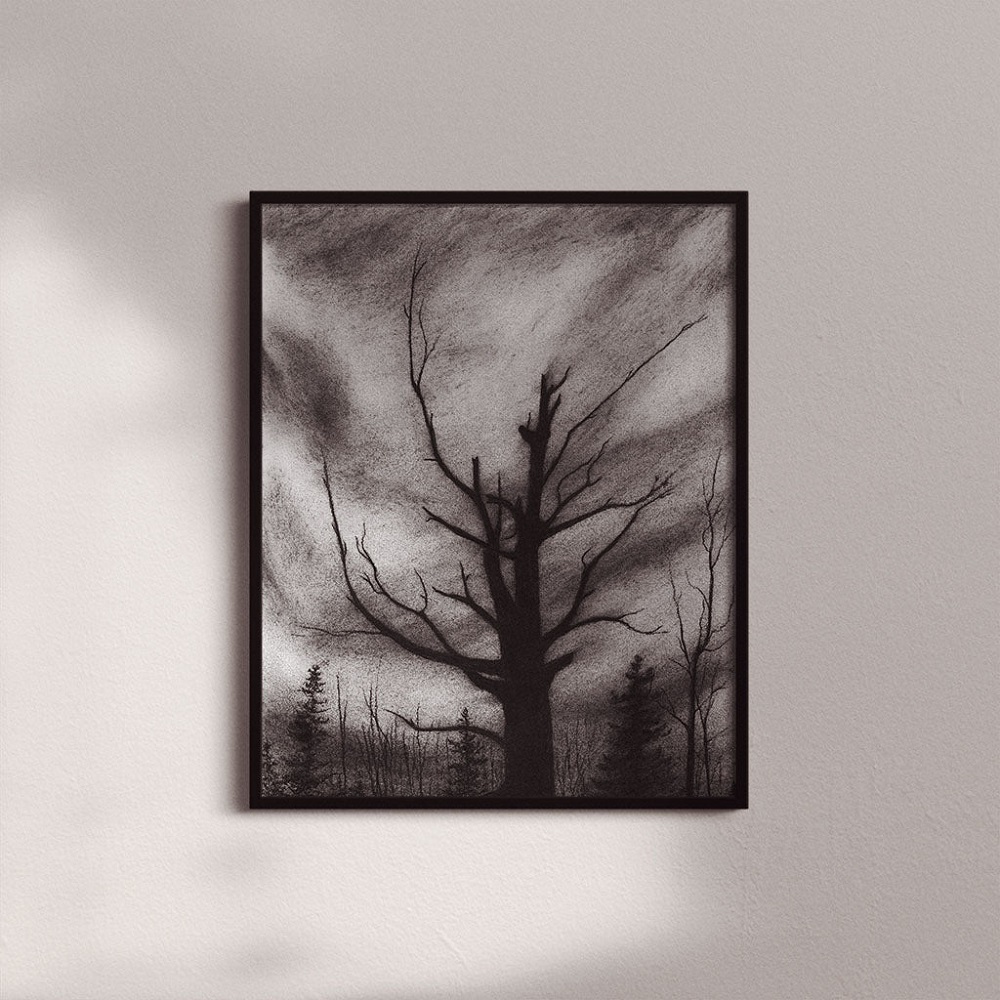White charcoal drawing is a fascinating art form that offers a unique spin on traditional charcoal techniques. Primarily used on dark or tinted paper, white charcoal allows artists to add highlights, create tones, and build contrast in a visually striking way. As a beginner, learning the basics of white charcoal can open up new dimensions in your artistic expressions. This guide will provide a roadmap for mastering the essentials of white charcoal drawing, starting with understanding the tools and progressing to techniques that will bring your drawings to life.
Getting Equipped: Essential Tools for White Charcoal Drawing
Choosing the Right White Charcoal
Starting with quality materials is vital, and white charcoal comes in different forms such as pencils, sticks, and even powder. For beginners, white charcoal pencils are often recommended for their ease of use and control. They offer precision for detailed work and can be sharpened to maintain a fine tip.
Selecting Suitable Paper
The paper you use will significantly impact the outcome of your white charcoal drawing. Opt for darker paper, ranging from grays to deep blacks, as it provides the necessary contrast for white charcoal to stand out. Papers with good tooth, or texture, will hold the charcoal better and help in building up layers.

Foundational Techniques: The Core of White Charcoal Drawing
Understanding Light and Shadow
White charcoal drawing revolves around light and shadow. Familiarize yourself with the concept of value — the lightness or darkness of a color. Using white charcoal, you will emphasize the lightest parts of your subject, creating contrasts that define forms and suggest depth.
Building Values with Layering
Begin layering your white charcoal lightly and build up to the brightest highlights gradually. This method allows more control over the tonal range and fosters a more realistic representation. Practice applying different pressures with your charcoal tool to vary the intensity of the white.
Setting the Tone: Creating Your First White Charcoal Drawing
Starting with Simple Shapes
Ease into white charcoal drawing by starting with simple shapes like spheres, cubes, and cylinders. These basic forms can teach you how light behaves across different surfaces, which is essential in creating more complex subjects later on.
Enhancing Realism with Gradation
Gradation is a technique where you smoothly transition from light to dark values. Mastering this in white charcoal drawing is crucial for adding volume and dimension to your subjects. Practice shading these simple shapes with a soft gradation to imply curvature and three-dimensional form.
Corrective Measures: Fixing Mistakes and Improving Your Art
Learning to Erase and Edit
Mistakes are part of the learning process, and with white charcoal, they’re not the end of the world. You can use an eraser designed for charcoal to lighten or remove marks. Alternatively, you can rework the dark areas around white charcoal marks to restore balance and composition.
Refining Your Drawing with Details
As your confidence grows, begin adding finer details to your drawings to increase their realism and vitality. Use sharpened charcoal pencils to define edges, textures, and subtle gradations. Be patient, as detailed work takes time to perfect.

Building Complexity: Moving Beyond the Basics
Exploring Textures and Patterns
Textures and patterns can add incredible depth and interest to your drawings. Practice by copying textures from photographs or life. Pay attention to how light highlights the texture, and use this information to guide your application of white charcoal.
Incorporation of Backgrounds
A well-considered background can elevate your white charcoal drawing from good to great. Experiment with different background values to make your subject pop. Sometimes, a subtle hint of light in the background can create a dramatic effect that enhances the overall composition.
Advancing Your Skills: Continuous Learning and Practice
Seeking Inspiration and Learning Resources
Expand your knowledge by studying the work of artists you admire. Many artists share their techniques through tutorials, workshops, and books which can be invaluable resources. Online communities offer platforms to receive feedback and witness a wide range of styles.
Consistent Practice and Experimentation
As with any skill, regular practice is essential for improvement in white charcoal drawing. Challenge yourself with diverse subjects and styles. Over time, your technique will become more refined, and your unique artistic voice will emerge.
Acquainting Yourself with Charcoal Types
While white charcoal is your primary tool, knowing other types of charcoal, such as vine and compressed, can help enhance your work. Use vine charcoal for sketching your composition lightly before applying white charcoal. This preliminary step will act as a guide for your highlights.
Complementary Use of Standard Charcoal
Incorporating standard charcoal into your artwork can provide a full spectrum of tones. Using both can achieve a dynamic range from the deepest blacks to the brightest whites, lending richness and contrast to your work that white charcoal alone cannot achieve.

Strategizing Your Approach: Planning Your Composition
Sketching a Roadmap
Begin each new piece with a simple sketch. Lay down the groundwork of your composition with gentle strokes to plan where the highlights will go. This step is crucial as it provides a structural blueprint before you commit to more permanent marks with the white charcoal.
Prioritizing the Focal Point
Identify the focal point of your drawing before you start. By knowing where you want viewers’ eyes to be drawn, you can strategically place your brightest highlights and deepest shadows to lead the viewer through your artwork.
Artistic Growth: Developing Your Style
Cultivating Personal Expression
As you gain comfort with white charcoal drawing, begin to inject more of your personality and style into your work. Experiment with different subject matters, varying your approach to highlight placement, and shadow to find what resonates with your artistic vision.
Embracing Creative Challenges
Push the boundaries of what you can do with white charcoal by tackling more complex and creative challenges. Try out unconventional textures, incorporate unexpected elements into familiar scenes, or play with light in ways that defy expectations to keep growing as an artist.
Technical Refinement: Sharpening Your Skills
Accuracy in Highlighting
Mastering white charcoal is about precision in where and how you apply your highlights. Use tools like tortillons or blending stumps for smooth transitions, and keep a sharpener handy to maintain a fine point on your pencils for detailed work.
Balancing Contrast and Detail
To make a piece stand out, understand the delicate balance between contrast and detail. Your drawing should have a hierarchy of tonal values that leads to clear composition and depth, making sure that details contribute to rather than compete with the overall effect.
Presenting Your Work: Final Touches and Display
Finishing with Fixatives
To preserve your finished white charcoal drawings, apply a fixative spray that seals the charcoal in place and prevents smudging. This will also help in protecting your piece if you plan to frame or display it.
Choosing the Right Frame
Selecting an appropriate frame and matte can enhance the visual impact of your white charcoal artwork. A frame not only protects your drawing but can also complement the contrast and drama that white charcoal provides. Consider the color and style of the frame to ensure it harmonizes with your piece without overpowering it.
Continuing the Journey: Lifelong Learning in Art
Keeping a Sketchbook
A sketchbook is an artist’s best friend. Maintain a sketchbook to jot down ideas, practice new techniques, or sketch on the go. This habit can fuel your creativity and serve as a record of your artistic evolution.
Joining Artistic Communities
Engage with local or online art communities. Participating in discussions, attending workshops, and sharing your work with peers can provide encouragement, inspiration, and constructive criticism that is essential for artistic growth.
White charcoal drawing is an accessible and rewarding medium for beginners. By starting with the right tools and foundational techniques, you can quickly grasp the essentials and begin creating stunning artwork. As you become comfortable with basic shapes and shading, you can introduce more complexity and detail into your work. Remember, the key to mastering white charcoal drawing lies in consistent practice and a willingness to learn from mistakes. With dedication and patience, the world of white charcoal will be a canvas for your creativity and imagination.